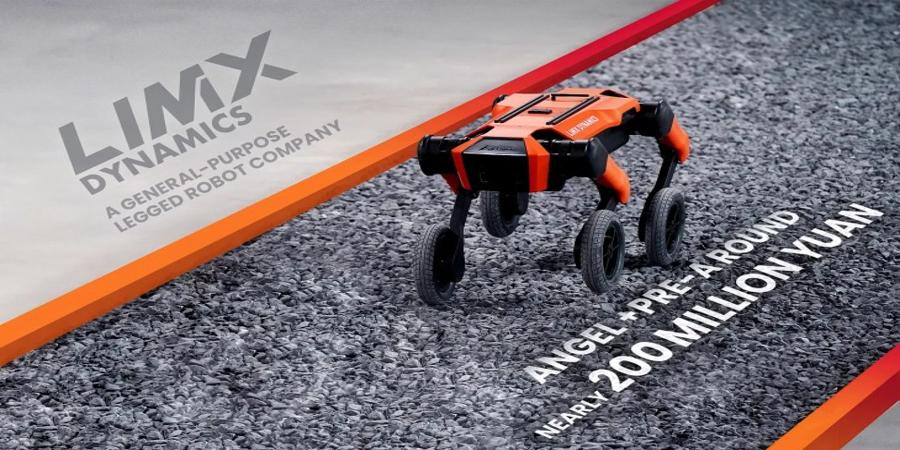Zhang Li‘s career path has looked like a bellwether for China’s tech trends. When the Cisco veteran joined WeRide in 2018, the Chinese autonomous vehicle company was less than a year old. In the next few years, the country would become a breeding ground for three AV unicorns, including WeRide, of which valuation surged to $4.4 billion last year.
Zhang’s resignation from WeRide in June, three months after the company filed confidentially for an IPO, came as a surprise to some people. But as we learned about his next step, it became evident that his decision was driven by his aspiration to work on the “next big thing.”
The former WeRide chief operating officer has joined LimX Dynamics, a Shenzhen-based robotics startup, as its co-founder and chief operating officer. Zhang will primarily focus on business strategy and operation, channel development, marketing and communications, and government relations, both domestically and internationally.
The timing, again, seems fortuitous. Just last week, China’s Ministry of Industry and Information Technology released a nine-page blueprint that outlined the country’s goal to mass-produce humanoid robots by 2025. Such top-level guidelines have historically helped lure talent and capital into a fledgling technology field.
After being in the AV industry for five years, Zhang felt an urge to move on. Again, he was looking for a startup to join and had two criteria in mind: first, it needs to have proprietary, cutting-edge technology; second, it should be able to attract substantial capital.
LimX Dynamics was his answer. Founded by a group of robotics scientists, the startup has already raised 200 million yuan ($27.5 million) in angel and pre-A financing. Along with the hiring of Zhang today, the startup is also appointing Dr. Jia Pan, a tenured associate professor at the University of Hong Kong, as its chief scientist.
“My strength lies in working with entrepreneurial scientists and companies where technology and business develop hand in hand,” Zhang told TechCrunch in an interview. Having helped WeRide find product-market fit and scale robotaxi operations in China, Zhang seems to be an ideal candidate for the startup working on legged robots, a relatively nascent type of mobile robot that uses leg mechanics to move.
The birth of Optimus has sparked widespread discussion on the similarities between robots and automated or autonomous driving. When Tesla introduced the humanoid robot last year, it highlighted the ties between the two areas. As my colleague Darrell reported then:
Think about it. We’re just moving from wheels to our legs,” explained one of the company’s engineers. “So some of the components are pretty similar [ … ] It’s exactly the same occupancy network. Now we’ll talk a little bit more details later with Autopilot team [ … ] The only thing that changed really is the training data.
Echoing the observation, Zhang said the transition to the new job would likely be smooth, thanks to the transferability of his knowledge and skillsets from self-driving.
“It’s obvious that like autonomous vehicles, legged robots also use SLAM [Simultaneous Localization and Mapping]. But as I delved more into the two fields, I realized that they have many other similarities. Today, most households own a car or two, but in the future, they may own one or more robots to carry out domestic tasks. Like self-driving vehicles, robots are tackling the issue of moving from point A to point B.”
But as Darrell also incisively pointed out, the similarities might be an oversimplification:
The domain expertise, while reduced to a simple translation by Tesla’s presentation, is actually quite a complex one. Bipedal robots navigating pedestrian routes is a very different beast from autonomous vehicle routes, and oversimplifying the connection does a disservice to the immense existing body of research and development work on the subject.
It’s too early to say where bipedal and quadrupedal robots will find their mass adoption. LimX Dynamics is currently piloting a prototype for industrial inspection use, with the intention of bringing its robots to automobile manufacturing, logistics and household services.
“Inspection is a no-brainer, but my job is to look for cases that aren’t even conceivable today,” said the executive. “If you think of robots as a device with an operating system, then there’s a lot of room for imagination.”
After years of frenzied investment and hiring, the AV industry’s path to generating meaningful revenues still remains unclear in both China and the U.S. Will legged robots face a similar fate? Zhang expressed his desire for a better outcome.
“Let’s hope that the robotics industry won’t sprint ahead without being able to land like self-driving.”
Corrected Zhang’s title at WeRide on Nov 7, 2023.
Source @TechCrunch



